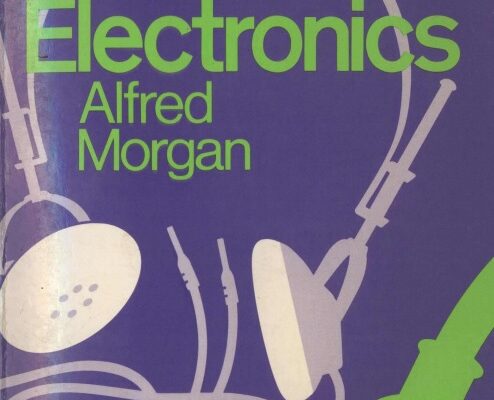Autor: Alfred Morgan
Published by Charles Scribner’s Sons, New York
Library of Congress Cataloging in Publication Data
Printed in the United States of America
An aparitie: 1977
Stiati ca..? Urechea umana este sensibila la vibratii ale aerului cu frecvente intre 20 Hz si 20 kHz, cu un maxim de sensibilitate auditiva in jur de 3500 Hz? Acest interval depinde mult de amplitudinea vibratiei si de varsta si starea de sanatate a individului. Astfel, sunetul se poate defini ca senzatia produsa in ureche de vibratii sau ca energia produsa de vibratii sau modificari ale presiunii.
Ce prezinta cartea?
Cum functioneaza un telefon? Cine a inventat radioul si cum sunt trimise semnalele sale? Daca doriti sa stiti despre toate aceste lucruri si multe altele, iata o carte necesara pentru cunostintele de baza, cu un continut mai putin tehnic, ajutand mult la deslusirea unor ‘mistere’.
Exista, de asemenea, planuri detaliate pentru multe proiecte – printre care receptoare radio simple, microfoane, amplificatoare si informatii despre cum sa trimiteti si primiti semnale radio telegrafice.
Toate proiectele pot fi concepute in atelierul propriu si sunt prezentate intr-un mod clar, interesant, care starneste curiozitatea tanarului om de stiinta.
Publicat pentru prima data in 1954 si acum disponibil intr-o versiune actualizata, editia „First Book of Radio and Electronics” sau tradus, „Prima carte de radio si electronica a domnului Morgan” este un clasic in domeniul sau.
Structura cartii
- The First Wireless Telegraph and the First Wireless Telephone
- A Few Facts About Electricity
- About Radio Waves
- Electrons and Electronics
- Radio Tubes-Feedback and Regeneration
- Things You Should Know About the Parts and Materials Used to Build Radio and Electronics Apparatus
- Crystal Detectors
- Simple, Practical Radio Receivers and How to Build Them
- How to Build a One – Tube Regenerative Receiver
- You Can Build an Amplifier
- The Antenna and Ground for Your Homemade Radio Receiver – How to Solder
- Learning to Send and Receive Radio Telegraph Signals


Foarte corect si clar precizat. Felicitari! As mai adauga aici… Energia minima pentru detectarea sunetului prin aparatul uman uditiv este de max: – 2…5 nW; – 2…5 nano wati; – 2…5 x 10 minus 9 wati.
Eu, din pacate, nu duc mai sus de 12Khz. Si asa cred ca ma laud.
Stiati ca exista emitator radio pe frecventa de 10khz pe care urechea umana nu il aude? Ce putere ar trebui sa aiba pentru a fi auzit?
Da, sa ne distram, o problema de fizica de olimpiada, stiind ca urechea umana, poate diferentia doua sunete daca intre ele exista 1/10 dintr o secunda, sa se calculeze care este distanta minima dintre om si un obstacol pentru a se sesiza efectul de ecou? Nu sunt alte date, adica restul sunt cunoscute. Incercam?
Cine aude 20kHz ? Media statistica este undeva la 14-16 kHz. Depinde foarte mult de igiena personala. Helmholtz, un reprezentant al speciei umane, auzea 30kHz, testat in laborator. Or mai fi si altii, netestati..
On topic: eu stiam ca sensibilitatea maxima a urechii umane este in jurul frecventei de 1.000 Hz, pentru vorbire inteligibila se limiteaza voit banda de trecere audio la 300 – 3.000 Hz in echipamentele de comunicatii vocale! Deci: care 3.500 Hz? Vezi si: corectie de volum fiziologic (aka loudness); caracteristica fiziologica amplitudine-frecventa a urechii umane, notiuni de acustica, audiograma….